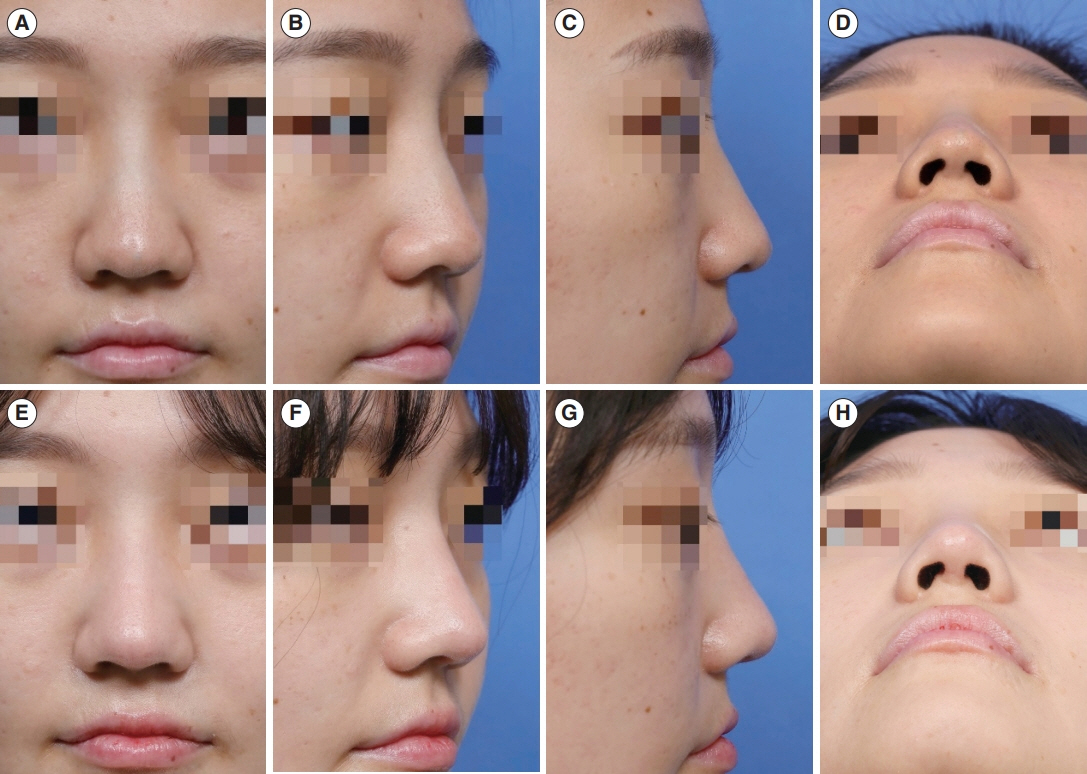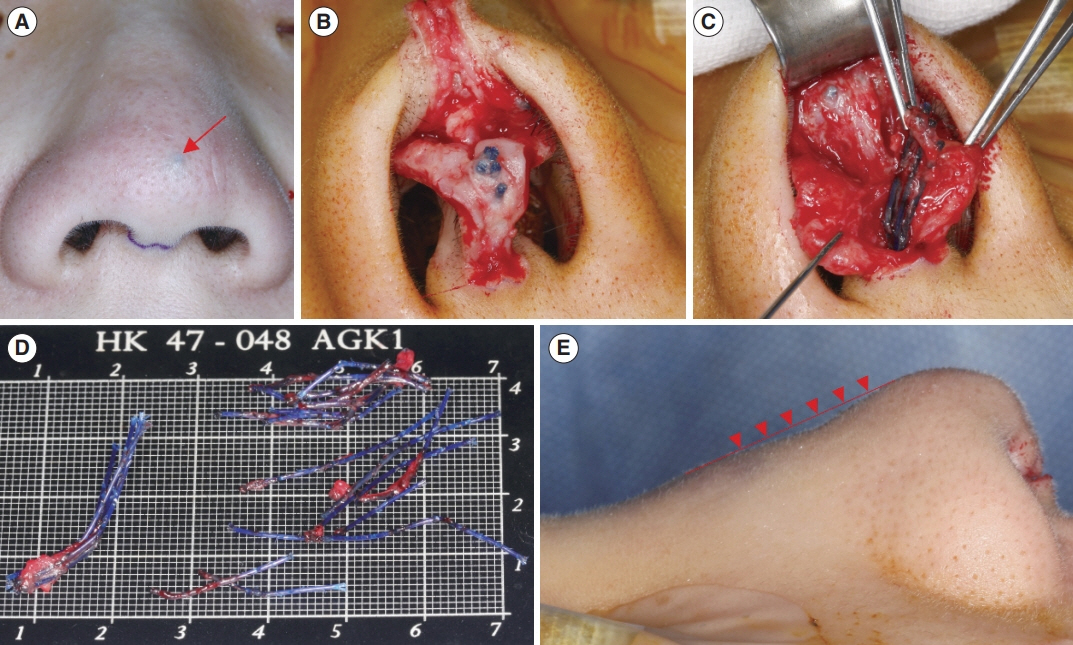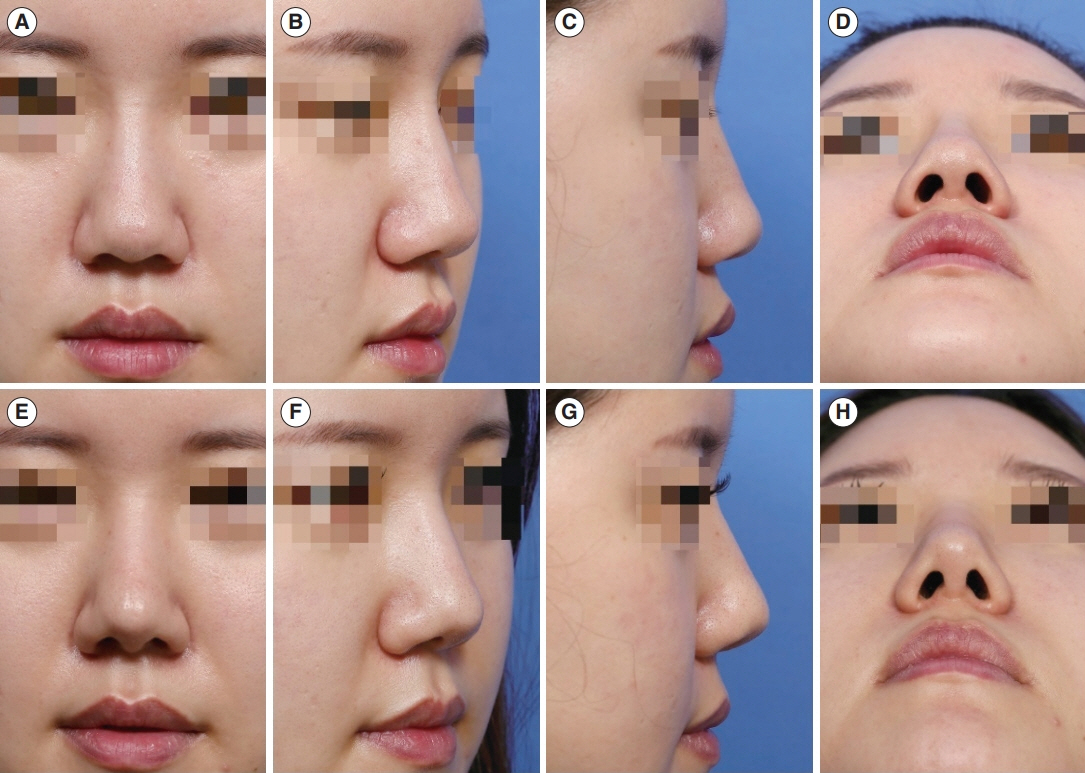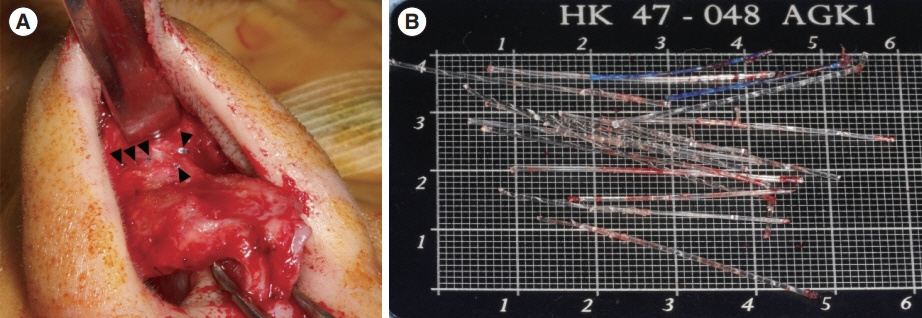Clin Exp Otorhinolaryngol.
2022 Aug;15(3):247-253. 10.21053/ceo.2022.00101.
Presentation Patterns and Surgical Management of the Complications of Thread Rhinoplasty
- Affiliations
-
- 1Dr. Jin s Premium Nose Clinic, Seoul, Korea
- 2Department of Otorhinolaryngology-Head and Neck Surgery, National Medical Center, Seoul, Korea
- KMID: 2532988
- DOI: http://doi.org/10.21053/ceo.2022.00101
Abstract
Objectives
. Nonsurgical rhinoplasty using threads has gained popularity in recent years. While the benefits of this procedure have been emphasized, possible complications and their management are not well-known. This study aimed to present the surgical management and results of the complications of thread rhinoplasty.
Methods
. We retrospectively reviewed the medical records of seven patients who underwent revision rhinoplasty due to the complications of thread rhinoplasty from January 2018 to May 2021. The presentation of complications, detailed surgical procedures, and outcomes of revision rhinoplasty were reviewed.
Results
. Visible or extruded threads at the tip were the most common complication, followed by dorsum irregularity. All the threads were unabsorbed and intact in shape, even several years after insertion. Thread removal necessitated careful tissue dissection, resulting in the loss of tip support and dorsal irregularity. To restore the tip support and camouflage the dorsum shape, an autologous tissue graft was needed.
Conclusion
. Removal of threads at the tip and dorsum was accompanied by structural weakening and partial tissue loss, which required tip support restoration and dorsum camouflage.
Keyword
Figure
Reference
-
1. Sulamanidze MA, Fournier PF, Paikidze TG, Sulamanidze GM. Removal of facial soft tissue ptosis with special threads. Dermatol Surg. 2002; May. 28(5):367–71.2. Williams LC, Kidwai SM, Mehta K, Kamel G, Tepper OM, Rosenberg JD. Nonsurgical rhinoplasty: a systematic review of technique, outcomes, and complications. Plast Reconstr Surg. 2020; Jul. 146(1):41–51.3. Hochberg J, Meyer KM, Marion MD. Suture choice and other methods of skin closure. Surg Clin North Am. 2009; Jun. 89(3):627–41.4. Lee HY, Yang HJ. Rhinoplasty with barbed threads. Plast Reconstr Surg Glob Open. 2018; Nov. 6(11):e1967.5. Kang SH, Moon SH, Kim HS. Nonsurgical rhinoplasty with polydioxanone threads and fillers. Dermatol Surg. 2020; May. 46(5):664–70.6. Jung GS. Minimally invasive rhinoplasty technique using a hyaluronic acid filler and polydioxanone threads: an effective combination. Facial Plast Surg. 2019; Feb. 35(1):109–10.7. Helmy Y. Non-surgical rhinoplasty using filler, Botox, and thread remodeling: retro analysis of 332 cases. J Cosmet Laser Ther. 2018; Oct. 20(5):293–300.8. DeVictor S, Ong AA, Sherris DA. Complications secondary to nonsurgical rhinoplasty: a systematic review and meta-analysis. Otolaryngol Head Neck Surg. 2021; Nov. 165(5):611–6.9. Kim HJ, Lee SJ, Lee JH, Kim SH, Suh IS, Jeong HS. Clinical features of skin infection after rhinoplasty with only absorbable thread (polydioxanone) in oriental traditional medicine: a case series study. Aesthetic Plast Surg. 2020; Feb. 44(1):139–47.10. Lee DW, Ryu H, Jang SH, Kim JH. Clinical features and literature review related to the material differences in thread rhinoplasty: two case reports. World J Clin Cases. 2021; Nov. 9(31):9635–44.11. Yoon JH, Kim SS, Oh SM, Kim BC, Jung W. Tissue changes over time after polydioxanone thread insertion: an animal study with pigs. J Cosmet Dermatol. 2019; Jun. 18(3):885–91.12. Ha YI, Kim JH, Park ES. Histological and molecular biological analysis on the reaction of absorbable thread; polydioxanone and polycaprolactone in rat model. J Cosmet Dermatol. 2021; Nov. 30. [Epub]. https://doi.org/10.1111/jocd.14587.13. Won TB, Jin HR. Revision rhinoplasty in Asians. Ann Plast Surg. 2010; Oct. 65(4):379.





